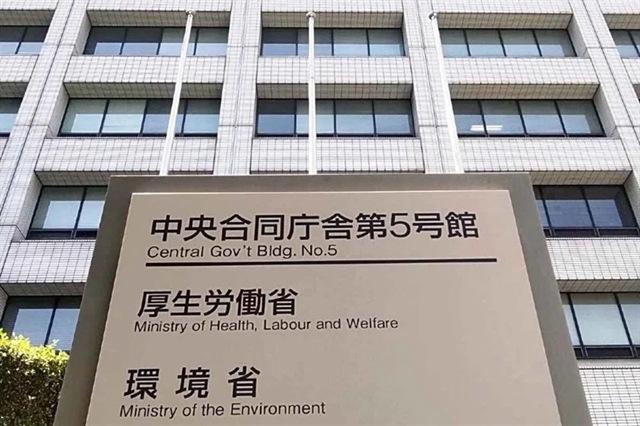 Media-OutReach Newswire
Media-OutReach Newswire

HONG KONG, CHINA - MediaOutReach - 18 March 2019 - Real estate transaction volumes in 2018 were the strongest onrecord reaching US$1.75 trillion; a 4% year-on-year (y/y) growth and surpassingprevious highs of US$1.68 trillion in 2017, according to new data from globalreal estate services firm Cushman & Wakefield.
The Global Investment Atlas 2019 reviews international investmentpatterns from 2018 and anticipates market performance for the year ahead.
The firm forecasts record levels to be maintained in 2019, in the regionof US$1.75 trillion, as investors target a wider range of markets to findopportunity, and more sellers come forward as real estate strategies adjust toevolving monetary policy, geopolitical tensions and structural change. Thereport states that pricing is expected to edge ahead, however this will bedriven by stable yields and steady rental growth for the best assets ratherthan yield compression which has typified recent years.
Report author DavidHutchings, Cushman & Wakefield's Head of Investment Strategy EMEA CapitalMarkets, explains: "Theeconomic environment is weaker than expected just a few months ago but so toois the inflation outlook on a global basis. As a result, while risk is up, theday of reckoning on interest rates for corporates and investors has againbeen delayed. The coming year is therefore set to see a further extension ofthe property cycle, offering investors another chance to get their portfoliointo shape ahead of a period of slower growth.
"With a stable, contracted incomeand exposure to growth and inflation, real estate continues to be incrediblyattractive and demand remains strong for the right product. However, definingthe right product has become ever harder as powerful, market-moving occupierstrategies are reshaped by e-commerce, social and business change, low growthand affordability constraints."
James Shepherd, Cushman & Wakefield's Managing Director of Greater China Research said: "Despite recent adjustments to the reserve ratio requirement, it seems unlikely that restrictions specifically targeting real estate debt are likely to be loosened in any significant way for the remainder of the year. Nevertheless, we forecast continued opening-up of the Mainland Chinese commercial property market to foreign investors and banks."
Shepherd added: "Withdeleveraging policies likely to remain in place, real estate outflows will beslow to recover but should steadily improve should lending and outboundinvestment policy soften. In a time of tight liquidity back home in China,Chinese investors are actively disposing of assets at a global level includingChina."
Shepherd added:"Cushman & Wakefield forecasts that Shenzhen, Guangzhou and Hong Kong areset to see increased investment demand through 2019. Beyond core cities of theGreater Bay Area, we also note strengthening interest in cities such as Zhuhai,Zhongshan, Foshan and Dongguan as well as key provincial capital cities."
Catherine Chen, Greater China Head of Capital Markets Research andForecasting, added: "Despite tradetensions between the US and China, US buying in the country reached recordlevels last year, particularly in Shanghai. As China transitions to aservices-led economy, the nation will continue to draw in global interest tothe growing CRE investment market."
A Complex International Picture
North America rebounded from 2017's volume decline to outperform in2018, both as a target and a source of real estate investment withlate-cycle tax stimulus in the US helpingto offset higher borrowing costs. Although all global regions were activebuyers last year, North America was the only capital source to increase overallcommercial real estate (CRE) allocations compared to 2017, with volumesincreasing 17% y/y to US$546 billion. Investment volumes in North America arepredicted to reach US$530.7 billion in 2019. This is a 3% decrease y/y but areflection of the regions' mature position in the property cycle putting upwardpressure on yields and follows an exceptional 2018.
CRE allocations in Europe, Middle East and Africa (EMEA) andAsia-Pacific (APAC) fell 2% and 1% respectively in 2018, the latter largely dueto fewer global purchases over the year. European and Asian institutions are,however, increasing allocations to real estate, and both regions are also likelyto see more inbound cross border demand, notably Europe in the short-term, andAsia in the medium-term as investors follow demographic trends.
EMEA investment volumes recorded US$331 billion in 2018, a 10.8% y/yfall owing to a pull-back from both global and domestic sources and theconclusion of some large portfolio deals. European retail documented its thirdconsecutive year of decline (US$56 billion), with lower volumes across much ofthe region. Industrial and office transactions also contracted by -24.7% and-9.7% y/y respectively but was likely down to a shortage of investible stock.EMEA investment volumes in 2019, are predicted to reach US$339.2 billion, a2.5% increase on 2018 levels, driven by increased demand across a growing rangeof tier 2 cities and new sectors.
Robust levels of domestic and continental spending, led Asia-Pacificinvestors to maintain the highest overall share of investment volumes in 2018at US$866 billion, a new record for the region. While domestic investorsretained the majority of transaction volumes, all sources of capital targetingthe area increased investment. Development sites were the most targeted sectorin the region, representing 80% of the market, previous records were alsosurpassed in the office and industrial sectors, while the hotel market reachedits strongest point post-GFC. Asia-Pacific investment volumes are forecast toreach US$875 billion in 2019, a 1% increase on 2018.
Following political upheaval in Brazil, Mexico, Costa Rica and Colombia,and a pullback in investment linked to exchange rate depreciation against thedollar, Latin America recorded the lowest transaction volumes in almost tenyears in 2018. Nonetheless, investment volumes are expected to leap 6% toUS$2.4 billion in 2019 as opportunistic investors grow in confidence. APACinvestors are increasing their exposure to the region for example, largelylooking for hotels and development land. Chinese investment into logisticsfacilities is also expected to continue.
Continental Flows BoostingCross Border Investment
In contrast to widernationalist trends, cross border real estate investment has flourished, growing10.7% to US$405 billion. This was led by stronger continental flows.
Carlo Barel di Sant'Albano, Chief Executive of Cushman & Wakefield'sGlobal Capital Markets & Investor Services, said: "Internationalcapital flows are becoming yet more dynamic, increasingly cross border and moreabout balancing quality with quantity -- this will be true whether you arereferring to stock, yields, talent or living standards.
An abundance of capitalwill continue to drive the market and sustain pricing in 2019, but structuralforces, such as e-commerce, will be driving areas of outperformance even as thecycle slows. Hence there is a real need to look beyond market averages to seethe detail of the local market, the deal, the vendor, the lender and above all,the user."
While the USA was thetop target for global CRE investment (US$45 billion), EMEA has retained itshistorical position as the most sought-after destination for internationalcapital, with the most cities among the top ten cross border investment targetsand attracting 53% (US$88 billion) of global investment.
The USA and Canada werethe top sources of cross border investment capital, together accounting for 40%of all non-domestic investment flows last year (US$125 billion). German capitalrounded out the top three at US$26 billion. Interestingly, despite UKinvestment managers strengthening their continental portfolios, Frenchcross-border investment outflows outpaced the UK for the first time on record.The make-up of cross border investment from Asia Pacific likewise altered, withmainland China and Hong Kong dropping back but Singapore and South Korea movingup the rankings.
Please click here to download the report.
Cushman & Wakefield (NYSE: CWK) isa leading global real estate services firm that delivers exceptional value forreal estate occupiers and owners. Cushman & Wakefield is among the largestreal estate services firms with 51,000 employees in approximately 400 officesand 70 countries. Across Greater China, there are 20 offices servicing thelocal market. The company won four of the top awards in the Euromoney Survey2017 & 2018 in the categories of Overall, Agency Letting/Sales, Valuationand Research in China. In 2018, the firm had revenue of $8.2 billion acrosscore services of property, facilities and project management, leasing, capitalmarkets, advisory and other services. To learn more, visit www.cushmanwakefield.com.hk or follow us on LinkedIn (https://www.linkedin.com/company/cushman-&-wakefield-greater-china)




